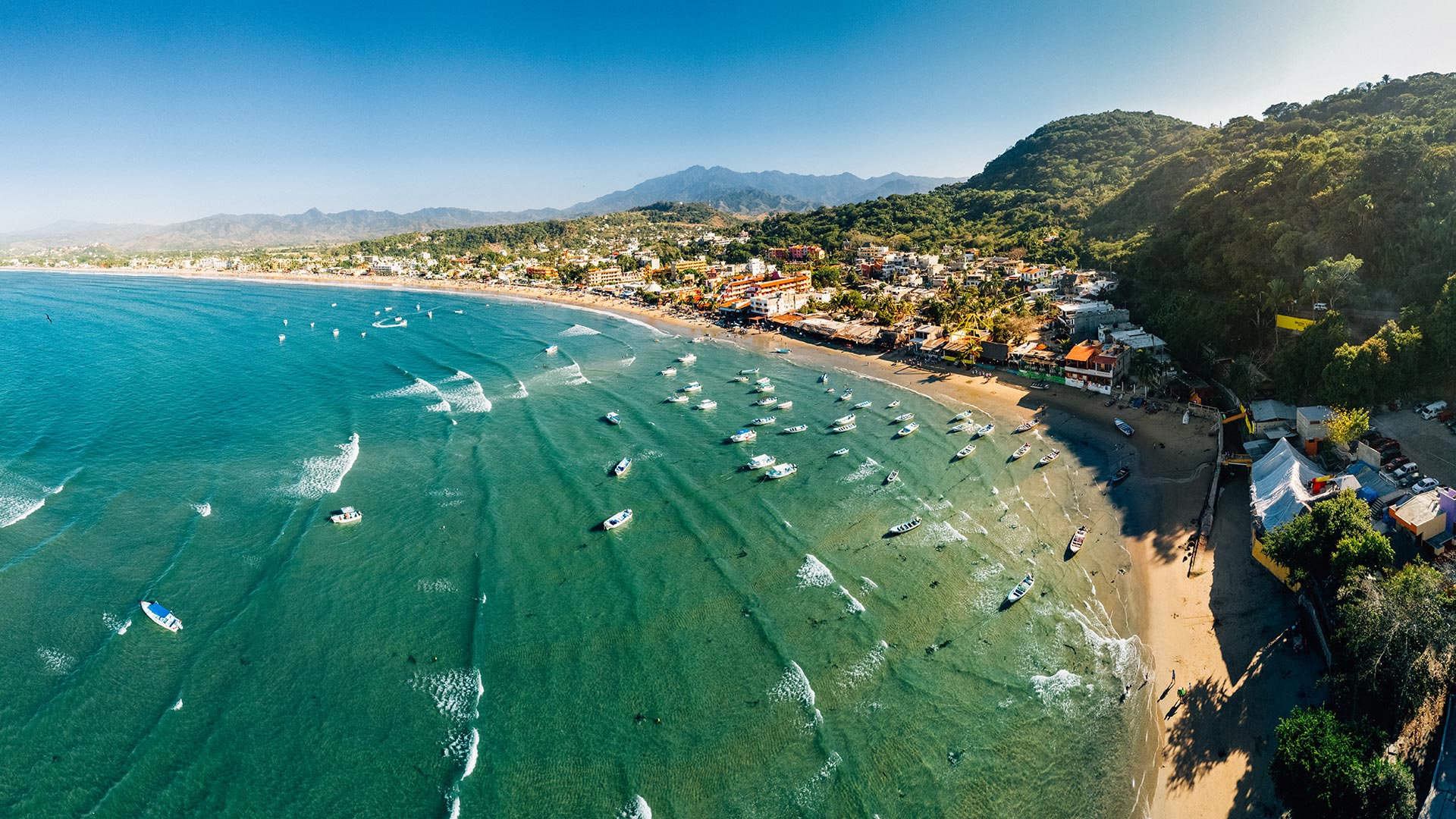Quick Guide
Puerto Vallarta’s tropical climate makes it pleasant to visit year-round, though summer sees more rain and humidity. Peak season runs from November through late March/early April; travelers can expect higher prices and more crowds.
Visas
U.S. citizens must present a valid passport when entering Mexico. U.S. citizens do not require a visa unless they plan to stay in the country for more than 180 days. Visit the Mexican National Institute of Migration’s (Instituto Nacional de Migración, INM) website for the most current entry, exit and visa requirements.
Money
Currency is in Mexican pesos, and ATMs are widely available.
Travel Health
Before traveling, research and prepare for what to do if you get sick while away.
Getting Here
Puerto Vallarta is served by Licenciado Gustavo Díaz Ordaz International Airport (PVR). Many visitors arrive via cruise ship, disembarking at Maritime Terminal.
Getting Around
Taxis are inexpensive and easy to find; rates are priced by zone. Local buses run frequently and are a convenient and inexpensive way to get around. Water taxis depart from Playa de los Muertos pier and serve the beaches on the bays’ southern side — including some stunners that are accessible only by boat.
Local Lingo
Spanish is the official spoken language, though most people working in the tourism industry will speak English. Learn a few essential phrases before your trip. Habla usted inglés?: Do you speak English? Qué tal?: What’s up? Cómo estás?: How are you? Perdón: Excuse me or sorry.
Must-Have Apps
Google Translate; Uber; WhatsApp
Insider Tip
Plan a visit to San Sebastián. Tucked into the Sierra Madre mountains, it’s one of Mexico’s so-called “Pueblos Mágicos” (magical towns). Places declared Pueblos Mágicos preserve some aspect of Mexican culture and tradition, and this 17th-century pueblo is no exception.
Puerto Vallarta’s tropical climate makes it pleasant to visit year-round, though summer sees more rain and humidity. Peak season runs from November through late March/early April; travelers can expect higher prices and more crowds.
Visas
U.S. citizens must present a valid passport when entering Mexico. U.S. citizens do not require a visa unless they plan to stay in the country for more than 180 days. Visit the Mexican National Institute of Migration’s (Instituto Nacional de Migración, INM) website for the most current entry, exit and visa requirements.
Money
Currency is in Mexican pesos, and ATMs are widely available.
Travel Health
Before traveling, research and prepare for what to do if you get sick while away.
Getting Here
Puerto Vallarta is served by Licenciado Gustavo Díaz Ordaz International Airport (PVR). Many visitors arrive via cruise ship, disembarking at Maritime Terminal.
Getting Around
Taxis are inexpensive and easy to find; rates are priced by zone. Local buses run frequently and are a convenient and inexpensive way to get around. Water taxis depart from Playa de los Muertos pier and serve the beaches on the bays’ southern side — including some stunners that are accessible only by boat.
Local Lingo
Spanish is the official spoken language, though most people working in the tourism industry will speak English. Learn a few essential phrases before your trip. Habla usted inglés?: Do you speak English? Qué tal?: What’s up? Cómo estás?: How are you? Perdón: Excuse me or sorry.
Must-Have Apps
Google Translate; Uber; WhatsApp
Insider Tip
Plan a visit to San Sebastián. Tucked into the Sierra Madre mountains, it’s one of Mexico’s so-called “Pueblos Mágicos” (magical towns). Places declared Pueblos Mágicos preserve some aspect of Mexican culture and tradition, and this 17th-century pueblo is no exception.
did you know?
The Mexican state of Jalisco (where Puerto Vallarta is located), is known as the capital of Mariachi music, and said to be where the genre first emerged.
Marriott Bonvoy Offers & Promotions
Enjoy exclusive offers on hotels stays and experiences in Puerto Vallarta
Offers
Where to Stay
Book Over 30 Hotel Brands Around the World











